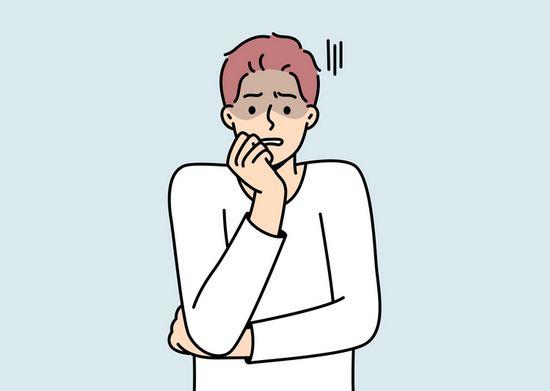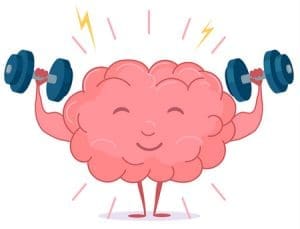
Derealization and depersonalization: Perceived insanity | 3
Ii’s been six months now. You continue to don’t just like the episodes, however you are feeling secure sufficient to be curious. “I’ve to confess it’s attention-grabbing. I imply, why does my mind do that?” Derealization and depersonalization: Perceived insanity – exploring. Let’s do some.
The thoughts could also be saying, ‘Um, getting a tad overloaded up right here. So to avoid wasting us a ton of aggravation, I’m going to flip the swap on a filter. We’ll be alright.’
Little question, derealization and depersonalization may be mega-scary.
However like so many signs of emotional and psychological sickness, terror can lesson in depth over time.
By the best way, have you ever had episodes?
Intro
We started this three-part collection on derealization and depersonalization (DD) two weeks in the past. It’s really an replace to the unique collection, written 14 years in the past.
Half one options attention-grabbing basic DD info, half two is basically about causes – and we’ll fulfill some curiosities – discover – right here partly three
In case you don’t know, some fast information: DD are most frequently dissociative signs of different situations. Nonetheless, the Diagnostic and Statistical Guide of Psychological Issues, Fifth Version, Textual content Revision (DSM-5-TR) has a diagnostic code for depersonalization/derealization dysfunction.
Let’s get after it…
Dr. V.S. Ramachandran on derealization and depersonalization

Dr. V.S. Ramachandran
Once I was exploring my DD and interested by going to grad faculty quite a few years in the past, the work of neuroscientist V.S. Ramachandran, PhD caught my consideration
In his guide, A Temporary Tour of Human Consciousness: From Impostor Poodles to Purple Numbers, he units the desk for his ideas on DD by mentioning two attention-grabbing neurological problems.
Now, the one purpose I’m going to share that is I do know you’ll resist the temptation to overgeneralize and catastrophize over having both. Know what I imply?
Capras syndrome (delusion) and Cotard’s syndrome (delusion)
These neurological problems: the primary, Capgras syndrome (delusion), is characterised by the affected person being satisfied a detailed member of the family or good friend is an impostor. The affected person has no downside greedy familiarity of look and habits; nonetheless, the relational significance isn’t there – they usually’re totally conscious of the disconnect.
Ramachandran then mentions Cotard’s syndrome (delusion), characterised by the affected person believing they’ve misplaced every little thing, even components of their physique, and believes they might be lifeless – and are strolling about as a corpse.
Ramachandran suggests DD could be attributable to the identical altered mind circuitry that generates Capgras and Cotard’s – even to the purpose of referring to DD as “mini-Cotard’s.”
The 2 options
Within the face of a life-threatening emergency, a bit of anatomy within the frontal lobe of the mind, the anterior cingulate cortex (additionally concerned within the processing of bodily ache), turns into lively.
Its ensuing motion pulls within the reins on the mind’s concern circuitry. Because of this, disabling phenomena corresponding to concern and nervousness fall by the wayside.
Nevertheless it doesn’t cease there, because the anterior cingulate then ramps-up alertness simply in case we have to defend ourselves.
Effectively, the bottom-line is, we’re left on this emotionally void and hypervigilant state.
Ramachandran proposes we then have however two options to account for what’s occurred: “The world simply isn’t actual,” presenting within the type of derealization, and “I’m not actual,” presenting within the type of depersonalization.
Our thoughts, our protector
I discover all of this actually very fascinating, particularly when you think about that one thing that feels so horribly scary, and that holds the potential to trigger such main dysfunction, may very well be the thoughts’s naturally meant manner of defending itself – and its assigned human.
The thoughts could also be saying, “Um, getting a tad overloaded up right here. So to avoid wasting us a ton of aggravation, I’m going to flip the swap on a filter. We’ll be alright.”

“Don’t fear, every little thing’s going to be simply advantageous – I’m Mighty Thoughts.”
To me, assigning a character, if you’ll, to the thoughts offers its distressing phenomena a softness and gentleness – making them appear a lot much less threatening.
I imply, it’s just like the thoughts is that this dwelling, feeling, defending being we are able to talk with. And it’s a reciprocating relationship primarily based on mutual respect.
I actually imagine on this relationship with the thoughts, and it’s my opinion that the one factor that retains us from realizing its fullest two-way potential is overcoming our misinterpretations and overreactions to its naturally occurring protecting mechanisms.
Sure, as quickly as we sense the start of sensations corresponding to DD, and the alarms sound, we predict our option to exaggerated and inappropriate reactions. And that’s what causes all of the hubbub, not the perceptual alterations themselves.
How one can handle derealization and depersonalization
Okay, so what are we going to do to deal with DD within the rapid, and to forestall return visits?
To begin with, we’re going to just accept DD for what they’re – not Capras, Cotard’s, and so many extra problems (I’ve heard ’em all).
After which we’re going to make the main focus of our intervention the underlying pathology that’s producing DD – nervousness, melancholy, bipolarity, high-stress, trauma, migraines, substances, and so on. On this context, DD are signs, not unbiased diagnostic entities.
Throughout an episode, we’re going to maintain cool and perceive we’re not going mad, and what’s taking place will not be a everlasting association. And at all times, at all times, at all times – we’re going to maintain transferring ahead.
One different observe. There are meds which will present some help. Actually the antidepressants and temper stabilizers could tackle the foundational points that generate DD.
And, after all, the benzodiazepines (Xanax, Ativan, Klonopin, and so on.) could carry momentary aid, however is {that a} street you actually wish to journey? After which, the atypical antipsychotic, olanzapine (Zyprexa), has been utilized in notably cussed circumstances of DD. However actually suppose lengthy and laborious earlier than hitting that freeway.
The saner we’ll really feel
In order that’ll do it for the collection. And I imagine an important collection it’s, as a result of derealization and depersonalization – so usually misunderstood – can wreak havoc on hundreds of thousands of lives.
Certainly, the extra info we soak up and flow into, the saner we’ll really feel.
Once more, numerous useful DD basic info partly one and it’s all about causes partly two.
Along with discovering him on YouTube and net searches, take a look at Dr. Ramachandran’s books. He’s an attention-grabbing man.
For those who’re up for much more emotional and psychological sickness information and inspiration studying, peruse the titles on the articles web page or by class under.
Dr. Ramachandran picture: Artistic Commons Attribution 3.0, no modifications made, writer Biswarup Ganguly.

After a decades-long battle with panic, generalized nervousness, fluctuating moods, and alcohol dependence; Invoice lastly discovered his life’s ardour and work – lending a hand to these in the identical boat. At age 49 he hit grad faculty and earned his counseling credentials. And he continues his service by way of Chipur and different initiatives.


